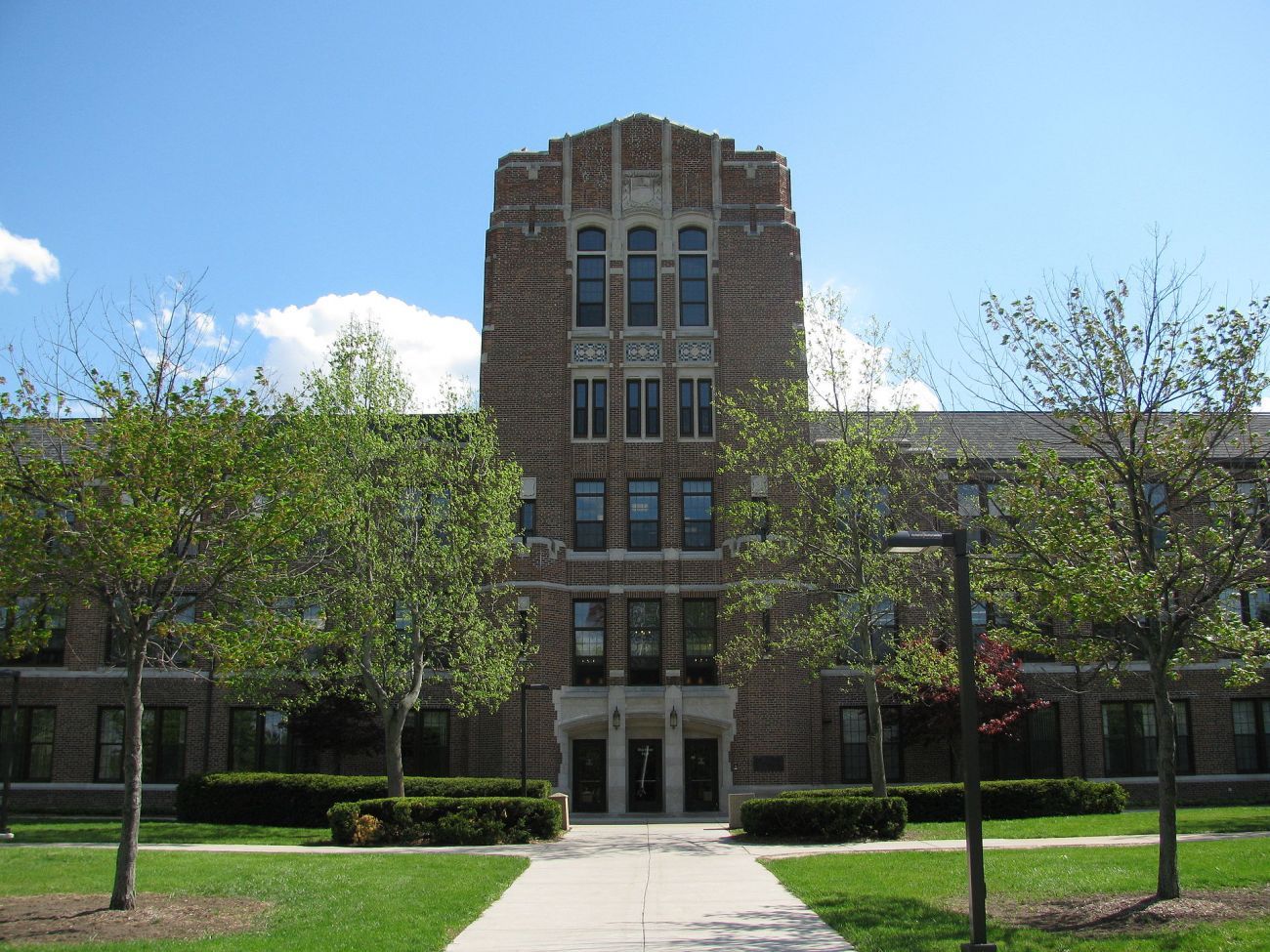CMU, Western and Ferris State boost first-time fall student enrollment

- Michigans’ regional public universities report positive trends in fall enrollment after years of decline
- College officials say campus visits and more personalized recruiting strategies are having a positive effect
- But enrollment generally remains below pre-pandemic levels, showing there is more work to do
Leaders at Michigan’s regional public universities are cautiously optimistic about fall 2022 enrollment numbers, but say more still needs to be done to ensure their universities are successful in the long run.
Western Michigan University, Ferris State University and Central Michigan University all have higher numbers of first-time college students this fall than in fall 2021 — though they remain below enrollment levels in fall 2019, before the pandemic hit. Eastern Michigan University’s first-time college students are down from last year, but 3 percent higher when compared to fall 2019.
Both CMU and EMU are recruiting more international students.
Related:
- U-M, MSU thrive while Michigan regional universities scramble for students
- As Gretchen Whitmer pitches Michigan education, a lag in college enrollment
- Central Michigan University blames 'complacency' for enrollment dive
The numbers suggest that the disruption of COVID-19 — which limited in-person recruitment strategies — may be behind schools as they recruit students for fall of 2023.
But Michigan’s regional public universities are still working to stabilize enrollment as they recover from a falloff in students, not just from the pandemic but also a shrinking pool of high school graduates in Michigan.
“I think it's very important for us to continue to figure out and unpack who we serve and who we serve well,” said Charles Cotton III, associate vice president for enrollment management at WMU in Kalamazoo. “But we've also continued to figure out how to double down not only in our own backyard but within the state.”
While there are fewer high school graduates to recruit, Cotton said, the university can still control how it puts “information out there to give students the resources to make the best decision on if college is the appropriate pathway for them directly out of high school.”
Bridge Michigan requested fall enrollment data from CMU, EMU, Ferris State and WMU since they were among the schools with the largest drops in enrollment between fall 2012 and fall 2021.
These numbers do not happen in a vacuum. As Bridge reported earlier this year, a more competitive statewide market for students means what happens at the state’s flagship universities affect what happens at regional public universities.
Bridge also requested information from Michigan State University and the University of Michigan Ann Arbor. MSU expects to publicly release fall 2022 numbers on Friday and U-M’s first year students have decreased about 3.3 percent from last year, though total school enrollment is up.
The Michigan Association of State Universities is expected to release its annual enrollment report later this fall. The state will also release data that shows how many Michigan high school graduates enrolled in higher education within six months of graduating.
But early numbers from the state’s regional colleges indicate a possible rebound.
At Ferris State, first time college students are up 24 percent this year compared to last fall. Dean of Enrollment Services Kristen Salomonson credits that largely to opportunities for in-person engagement with prospective students and a scholarship students can receive if they attend a financial aid workshop.
“Ferris State is a campus that I really believe that people need to come and experience to be able to understand what type of institution it is, and what services and activities that we provide,” she said. “…We're not a big, you know, marquee school. So we don't have the reputation of a big S or a big M. And I think getting the real experience helps us very much.”
While Ferris State made big strides this fall, its first-year class remains 7.8 percent below fall 2019 levels.
Western Michigan’s first-time student levels are up nearly 24 percent compared to last year (though it’s still 10.9 percent below 2019). And as of Oct. 3, submitted applications for next year’s incoming class are up 18 percent from the same point last year.
EMU first-year applications are up 21 percent compared to this time last year, said Kevin Kucera, EMU’s vice president for enrollment management. Applications from Hispanic and African American students are also up this fall.
Central Michigan has suffered a significant enrollment decline over the last decade and as Bridge previously reported, Jennifer DeHaemers, the vice president of student recruitment and retention, laid out an ambitious marketing approach to recruit new students.
This fall, there are 6.2 percent more first-time students than last year when comparing preliminary 2022 numbers to official end-of-semester numbers provided by the school.
DeHaemers credits a new communications system that allows the university to text, call and email potential students; staff approaching potential students with personalized conversations and the reinstatement of a call center where current students reach out to prospective students to answer questions about college life.
But like the others, CMU still has work to do to return to pre-pandemic levels: first-year enrollment is down 18 percent compared to 2019.
Looking overseas for students
As universities aim to enroll more from a dwindling supply of Michigan residents, they are also targeting other groups, including international students.
“We have to continue to understand that you can't put all your eggs into the domestic freshman basket,” said Kucera of EMU. “You have to kind of diversify your portfolio. And I think we're working hard. I know we're working hard, and I think we're making some good inroads there. That’s really what’s going to return to normalcy.”
The school has partnered with Beibu Gulf University in China to offer engineering and construction majors. About 41 percent of Eastern’s 922 international students are part of the partnership. A year ago, about 26 percent of 647 international students were part of the partnership.
Kucera said he was in China testifying about the project shortly before the pandemic started to shut things down.
“We were lucky we got that done and out in Beijing. But you know, it's not easy. I mean, it is not easy returning to normalcy. I don't want anyone to think that. You got to roll up your sleeves. You have to work really hard. You have to have faculty who are engaged and we do.”
CMU has more than doubled international students in its preliminary count this fall, compared to its preliminary count last year.
There are now about 1,200 international students at CMU, which DeHaemers credits to a confluence of factors: the director of international admissions is “just a ball of energy” even during virtual recruiting efforts in the middle of the night; the school now uses overseas recruiters for international students; two graduate programs were able to increase capacity for students, and CMU has sped up the process of securing an important immigration form for prospective students.
DeHaemers hopes to keep international enrollment steady in future years and said the school is budgeting for a 3 percent increase in first-year and U.S. transfer students.
CMU hosts breakfast and lunch events for high school and community college counselors in local communities.
“Our goal is to grow,” DeHaemers said.
Salomonson at Ferris said she wants to improve the school’s transfer rates but acknowledged that community college enrollment affects a 4-year university’s transfer numbers.
“I think we're going to improve on the transfer number next year. But I don't think that increase is going to be much more than two or three percent,” she said.
Salomonson also anticipates Michigan’s public universities will continue to be more flexible on student admission requirements, even as COVID recedes.
“I think continued flexibility in terms of test scores, in terms of self reporting some of your grades, really making the application process seamless, is going to be another key to keeping enrollment healthy,” she said.
Michigan Education Watch
Michigan Education Watch is made possible by generous financial support from:
Subscribe to Michigan Education Watch
See what new members are saying about why they donated to Bridge Michigan:
- “In order for this information to be accurate and unbiased it must be underwritten by its readers, not by special interests.” - Larry S.
- “Not many other media sources report on the topics Bridge does.” - Susan B.
- “Your journalism is outstanding and rare these days.” - Mark S.
If you want to ensure the future of nonpartisan, nonprofit Michigan journalism, please become a member today. You, too, will be asked why you donated and maybe we'll feature your quote next time!






